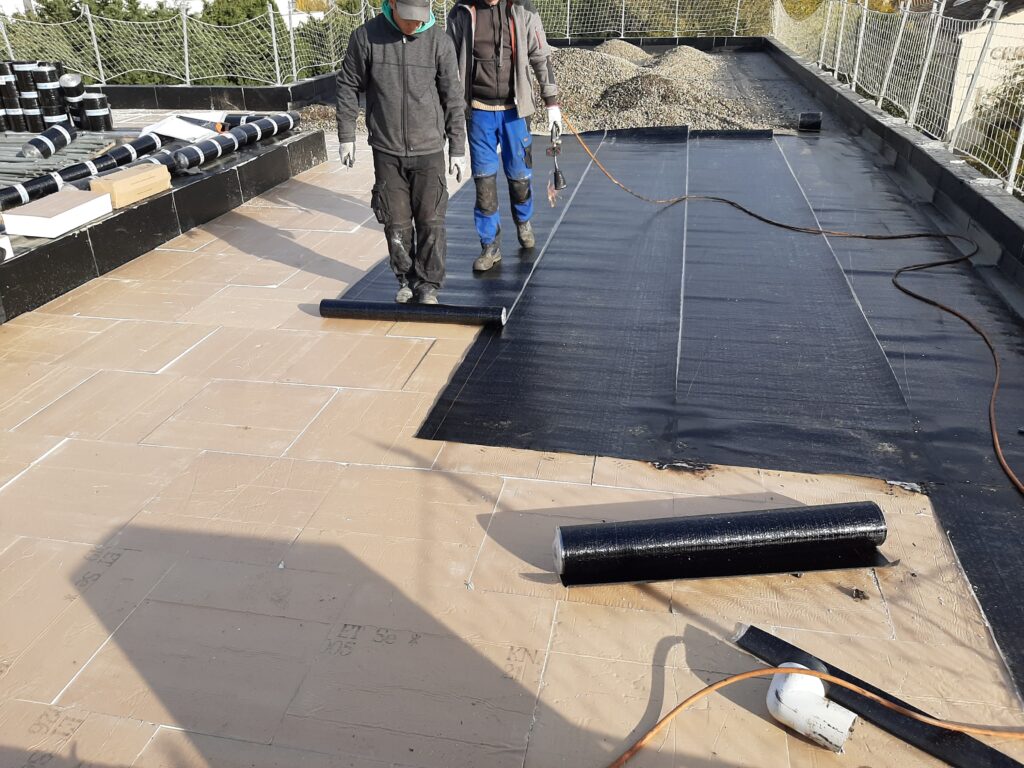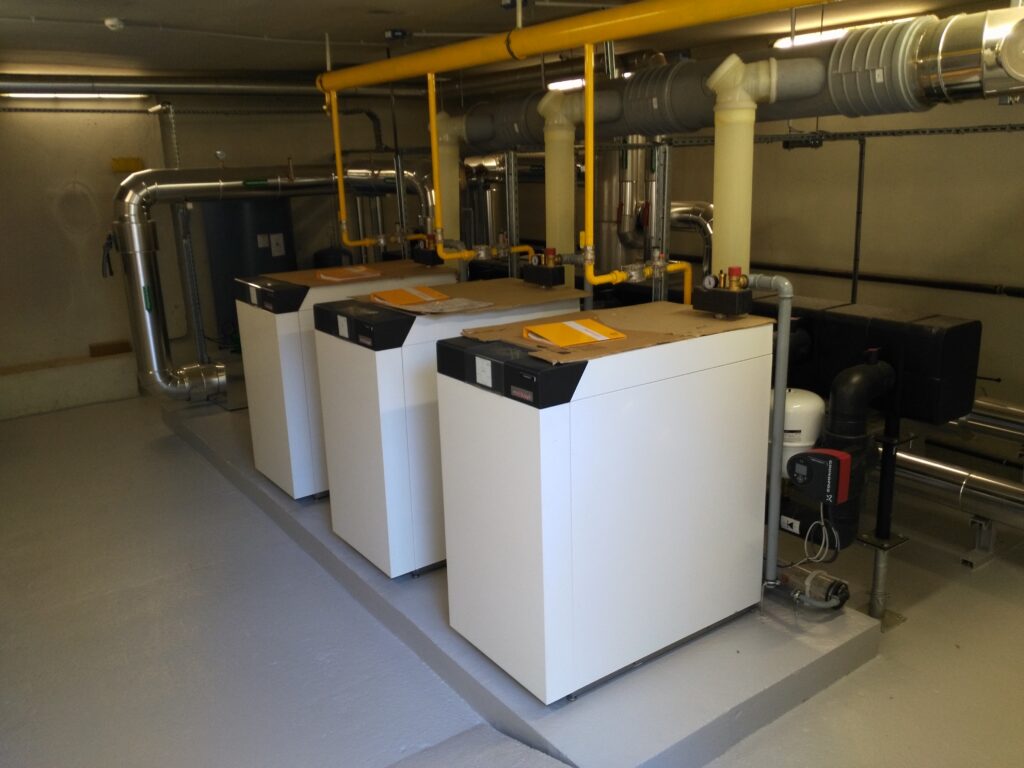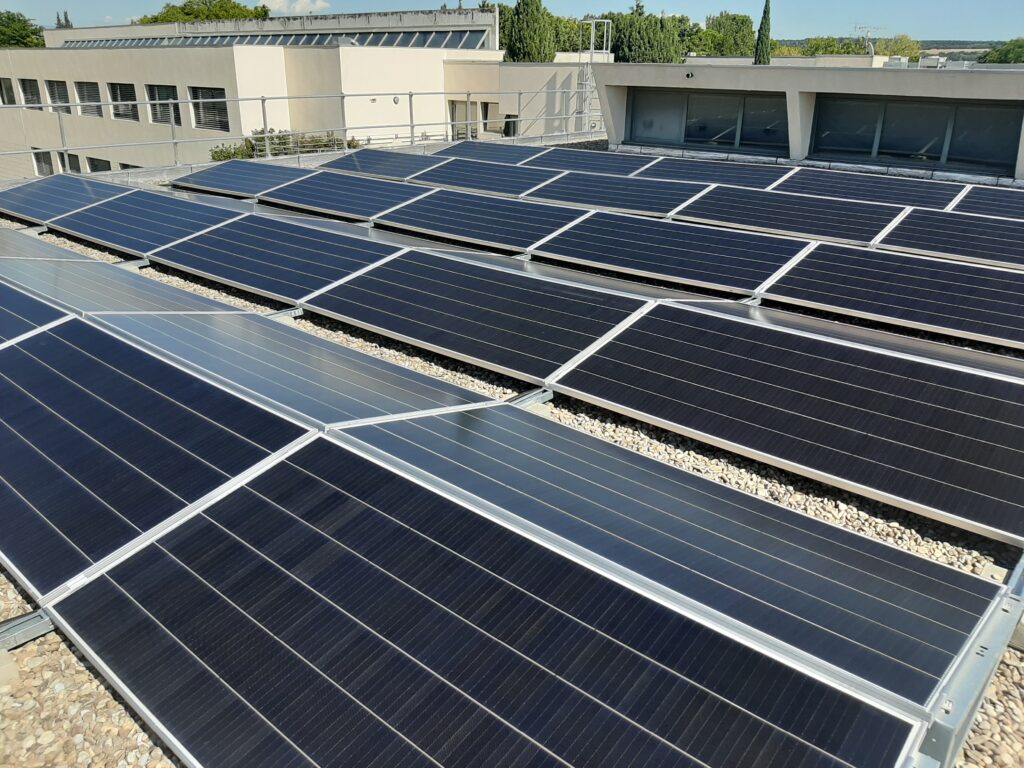Energy savings and eco-actions
Since 2015, Avignon University has been keeping a close eye on its consumption.
The aim? Less energy wasted, more efficient buildings and a planet that breathes a little better.
Actions already taken
Building insulation
Attic insulation in the North Building on the Hannah Arendt campus
The roof is responsible for 30 % of heat loss. It is therefore essential to have effective thermal insulation to protect against both heat and cold.
Part of the roof of the North building, above rooms 2E01 to 2E05, i.e. around 800 m², was renovated at a cost of €30,891. The beautiful 16th-century roof structure was treated for woodworm before the dusty rockwool was removed and a thorough cleaning carried out. An airtight membrane was installed and a deck built to make it easier to move around in the attic to maintain the technical equipment.
It was then that the 30 cm of rock wool, laid in two criss-cross layers, was installed to provide perfect insulation. Two years later, when the roof was being renovated, the same treatment was applied to the west roof of the building housing rooms 2W12 to 2W16, resulting in a re-insulated surface area of 417 m² at a cost of €21,497.


Complete re-insulation of the CERI roof terrace on the Jean-Henri Fabre campus
The Centre d'Enseignement et de Recherche en Informatique (CERI), built in 1995, has undergone major work to re-insulate its 2,500 m² roof. No less than 12 cm of polyurethane, a high-performance insulator, were added to the existing 5 cm. The aim was to reduce heat loss by a factor of four.
The work, carried out in 2021 and 2022, cost €161,829 and also resulted in a brand new waterproofing system.
LED lighting with motion detectors
LEDs in classrooms and corridors
The renovation of lighting fixtures, aimed at replacing fluorescent lighting with LEDs, is being rolled out progressively in all buildings, at a cost of €334,265. Longer-lasting, flicker-free and above all more energy-efficient, this technology has been installed throughout the CERI, in some classrooms in the North building and in the lecture theatres in the South building (AT01 to AT06) on the Hannah Arendt campus. The corridors in the North Building, the Sports Centre and Building A on the Jean-Henri Fabre campus (Agrosciences Centre) have also been renovated.
To maximise savings, motion detectors have been installed, enabling the lights to be switched on and off automatically. What's more, when there's enough natural light, the artificial lighting is automatically switched off!
Improving heating and control systems
- Thermostatic valves on building radiators
In the run-up to the 2022/2023 heating season, the deployment of thermostatic valves continued at a cost of €20,640. Nearly 200 thermostatic valves were installed on the radiators in the North building. These devices enable finer temperature management in each equipped classroom and office, taking into account solar gain and room occupancy in order to maintain a stable temperature of around 21°C and avoid overheating.
Other buildings have also been equipped in the past: Chabran site, Agrosciences building A, IUT and CERI. - Variable flow pumps for heating and cooling the South building downtown site
The heating and air-conditioning system in the South building is provided by geothermal heat pumps, which draw the necessary heat directly from the water table. The 7 pumps that distribute the heating and cooling throughout the building used to operate at constant speed. They were replaced by variable flow pumps, which are more efficient because they adapt to the building's actual heating or cooling requirements. The investment cost €97,339. - Improving heating regulation at the Sports Centre
The latest work to be carried out involves improving the heating control system at the Sports Centre. Extensive work has been carried out to modernise and optimise the heating distribution and control systems. The administrative part of the Sports Centre has been fitted with communicating thermostats with automatic restart in the morning, the heating distribution pumps have been replaced by variable flow pumps, variable speed drives have been installed on the air handling units in the gymnasium, combined with CO2 sensors to ensure correct air renewal, and the control valves have been replaced to match the new pumps perfectly. This work will reduce the amount of electricity and gas wasted, at a cost of €77,864. It is also part of a major reduction in the building's energy consumption. In 2011, the building consumed 520,678 kWh of gas, but now only 76,800 kWh, a reduction of more than 85%! - Replacement of boilers at CERI and the North building on the city centre site

CERI's boiler room has had a facelift! The two gas-fired boilers dating from 1995, although still operational, were technologically outdated. They were replaced at a cost of €106,918 by modulating condensing boilers with much higher efficiency.
Commissioned during the winter of 2022-2023, they have proved their effectiveness, reducing gross consumption by 40 % compared with the previous heating season.
The university's largest boiler room, in the North Building on the city centre site, has also undergone major renovation, with a complete overhaul: replacement of the three boilers, the variable flow distribution pumps, the entire smoke system, the electrical cabinet, the gas detection system, complete re-insulation of the pipes, painting of the floor, etc. An operation costing €268,225 for an installed capacity of almost 900 kW, to be completed in 2023.
Green electricity supply
Since 2015, the university has been committed to using green energy to supply its buildings with electricity.
By 2025, the proportion of green energy will reach 100 % of the electricity consumed. This gives the university a guarantee that the electricity used comes exclusively from renewable sources, such as hydroelectric, photovoltaic or wind power stations.
Installation of photovoltaic power plants

The university is also investing in the production of low-carbon energy by installing photovoltaic panels.
An initial 38.6 kWp installation went into operation in 2022 on the renovated roof of the CERI. It produces electricity that is consumed directly by the building (self-consumption). Annual production will be 50,000 kWh in 2023 and 45,400 kWh in 2024, representing around 13 % of the building's electricity consumption.
Other power stations are being studied to equip buildings, notably on the Jean-Henri Fabre campus. The investment amounted to €44,700.
Consumption review and results
The university has been tracking its energy consumption since 2012, i.e. 13 years of monitoring for electricity, gas and water.
In 2024, the buildings' energy consumption amounted to :
- Electricity 2,552,680 kWh (€716,087)
- Gas 1,459,192 kWh (€159,494)
- Water : 13 886 m³ (48 142 €)
For a total of 923 723 €.
In 2012, consumption was much higher:
- Electricity 4,235,501 kWh
- Gas 3,218,627 kWh
- Water : 14 037 m³
- Fuel electricity: 567,023 kWh
Between 2012 and 2024 :
- Electricity consumption fell by 40 %
- Gas from 55 %
- Water consumption fell by 1 %
- The use of fuel oil has been completely phased out
Reducing energy and water consumption in university buildings
This is the role of Olivier Platon, a building economist. The actions developed target better programming of equipment, technical improvements to heating/air-conditioning, lighting and ventilation systems, and improved building insulation.
Since 2012, precise and regular monitoring of the buildings' energy consumption has been put in place, enabling a number of actions to be taken, such as adapting the heating operating periods to the occupancy of the buildings, installing heating optimisers, variable flow pumps on the heating circuits and thermostatic valves on the radiators.
The replacement of lighting with LEDs and the reinforcement of loft insulation are gradually being implemented. Raising awareness among staff and students is also essential.
It should be noted that the energy budget required to run the university's buildings will amount to €923,723 in 2024, having risen to €1,108,873 due to soaring energy prices (heating, air conditioning, lighting and ancillary needs for the premises).
Meet Olivier Platon, flow economist
A specialist in building heating and energy installations, he works on all energy-related issues (electricity, gas, water, fuel) to improve the energy efficiency of buildings. He also educates campus users about the importance of saving energy.
What is your educational and professional background?
After obtaining my professional degree Energy management and renewable energiesThen I became an energy advisor. I then became a flow economist for a number of local authorities in the Bouches-du-Rhône department, and then for the South PACA region, where I was responsible for reducing energy and water consumption in secondary schools. I joined Avignon University in 2015, when the position of flow economist was created.
What is your role at the university?
My job is to implement measures to reduce energy and water consumption in the university's buildings, targeting improvements that will deliver a rapid return on investment.
This work involves insulating buildings and improving systems for producing heat or air conditioning, domestic hot water, ventilation, etc. Raising user awareness is also essential. My job involves working with all the players at the university. Most of the work carried out is invisible, and that's the whole point: to make energy savings without impacting on user comfort.

A word about the university's energy consumption?
It has 70,828 m² of assets, equivalent to the surface area of ten football pitches, which need to be heated, air-conditioned, lit, ventilated, etc.
This represents significant annual expenditure, equivalent to the consumption of a town of 10,200 inhabitants such as Vedène or Fontaine-de-Vaucluse.
The budget amounts to €675k/year, all energies combined.
What have been the highlights of the last few years?
I'm currently working on the work to be carried out as part of the Recovery Plan. The government has allocated €1.05m to the university for measures to promote the energy transition. One of the projects that has been completed is the renovation of the lighting in the classrooms and circulation areas of the North Building. The fluorescent tubes have been replaced by LED panels coupled with motion detectors. The installed power has been divided by 3.5, with superior illuminance.
In the coming months, the CERI roof will be re-insulated and the first photovoltaic power plant installed. In this way, the university aims to control its energy consumption and costs, promote sustainable development and move towards cleaner energy sources.
Behind this work lies an important objective: to meet the requirements of the Kyoto Protocol for all tertiary buildings, including universities. tertiary decree set up by the French government. By 2050, the university must reduce its energy consumption by 60 %.
Name one thing that everyone can do to reduce energy consumption.
The elimination of electric space heaters, which allow you to heat beyond the 21°C recommended by the university. These heaters consume a lot of energy and are expensive. It is preferable to wear extra clothing.
If staff are having problems with the heating, don't hesitate to report them. What's more, as part of the recovery plan, the university is going to improve the heating in the North building to ensure more uniform temperatures.
I would also like to invite staff to send me their ideas. Protecting the environment is everyone's business, and it's thanks to everyone's efforts that we will make progress. Since June 2020, a campaign Taking action for the environment has been set up at the university.
Contact: econome-flux@univ-avignon.fr
Updated on 10 July 2025